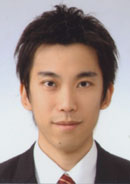
Associate Professor
Current Affiliation
Institute of Environmental Radioactivity
Radioisotope Geoscience Division, Atmospheric Radionuclide Dynamics
Fields of Research
Elucidation of atmospheric transport process of natural and artificial radioactive materialsKeywords
Environmental radioactivity, Atmospheric transport model, Source term estimationCurriculum vitae
| 2010 | Ph.D. in Engineering, Nagoya University, Department of Energy Engineering and Science |
| 2010 | Assistant Professor, Department of Energy Engineering and Science, Graduate School of Engineering, Nagoya University |
| 2015 | Senior Assistant Professor, Institute of Environmental Radioactivity, Fukushima University |
| 2021 | Associate Professor, Institute of Environmental Radioactivity, Fukushima University |
Profile
My research focuses on elucidation of the dynamics of natural and artificial radionuclides in the atmosphere and the applied research using atmospheric transport model. I study the radionuclides which are mainly radon (Rn-222) and its decay products, as well as artificial radionuclides such as cesium (Cs-137). In addition, I carry out the research of iodine (I-129), and tritium (H-3) in environment with other co-researchers.Academic Society Memberships
Atomic Energy Society of Japan, Japan Health Physics SocietyOutline of My Research
The release of radioactive materials into the environment from the nuclear facility are caused by multiple factors as well as by unexpected accidents and natural disasters. At that time, spatio-temporal distribution of the atmospheric concentration of radioactive materials is essential information to evaluate the environmental impacts caused by the nuclear accident at its early stage, especially as of internal exposure. Its distribution can be calculated by the atmospheric transport model. The calculated deposition distribution on the soil, river, and ocean gives initial information when evaluating the environmental impacts over the medium to long term.
I have studied the atmospheric transport process of radioactive materials by combining observation of environmental radioactivity and calculation using atmospheric transport model. I have developed and improved a wide-range transport model targeting natural radionuclide radon (Rn-222) and its decay products. I have also observed atmospheric concentrations of radon in and outside the country, and have estimated the distribution of global radon source. Moreover, I have developed a method for estimating the source term information in an emergency at the nuclear power plant.
The remaining challenges in Fukushima Daiichi Nuclear Plant accident are firstly the improvement of the accuracy in estimating the temporal change of early atmospheric release of radioactive materials (especially radioactive iodine), secondly the reconstruction of time and space distribution of atmospheric radioactivity concentration based on this source information, and lastly the improvement of the accuracy in modeling dry and wet deposition processes. By addressing these issues with my research, I endeavor to provide scientific information for nuclear disaster prevention, as well as to elucidate the atmospheric transport process of radioactive materials through studying environmental radioactivity in Fukushima.